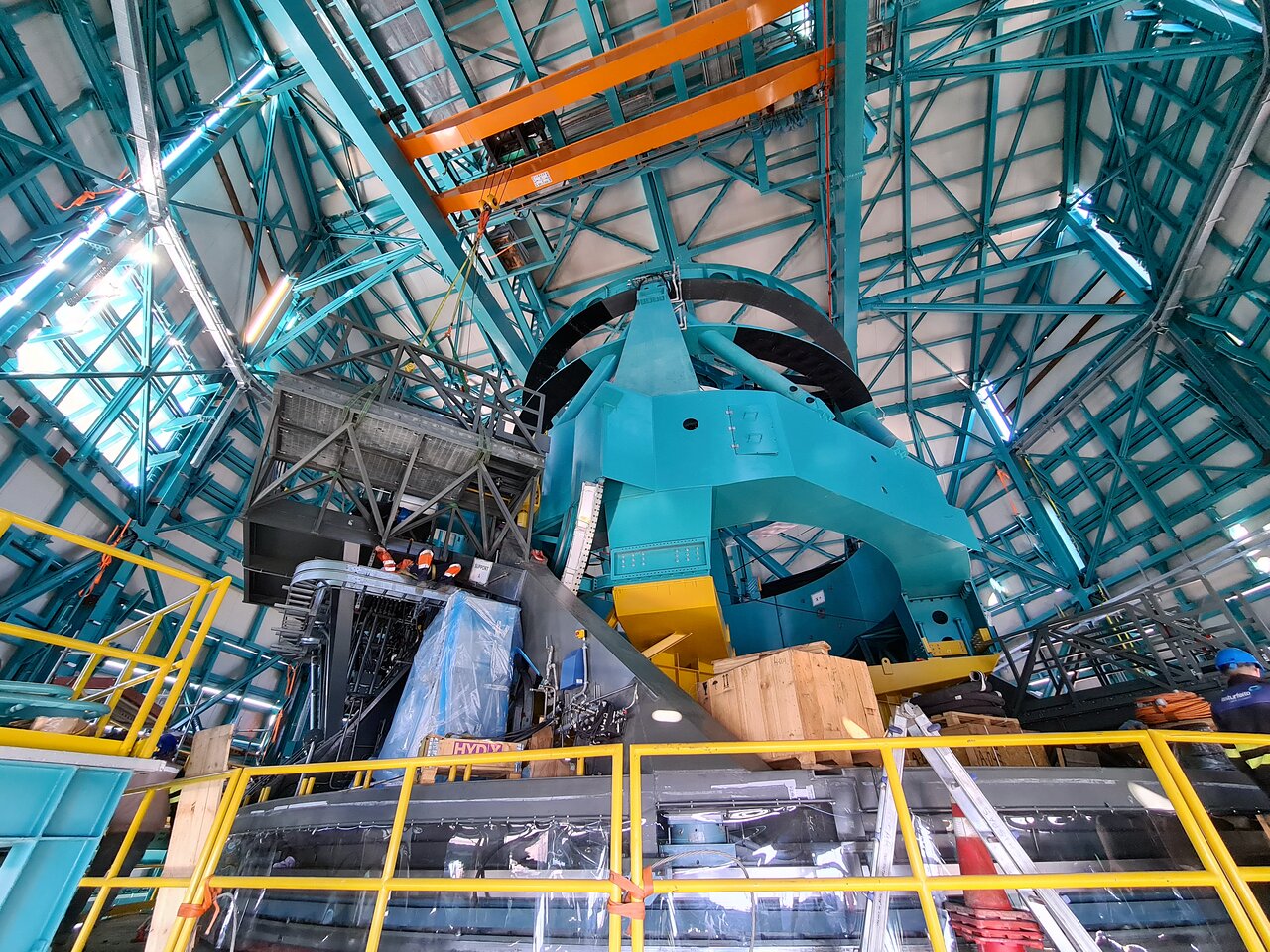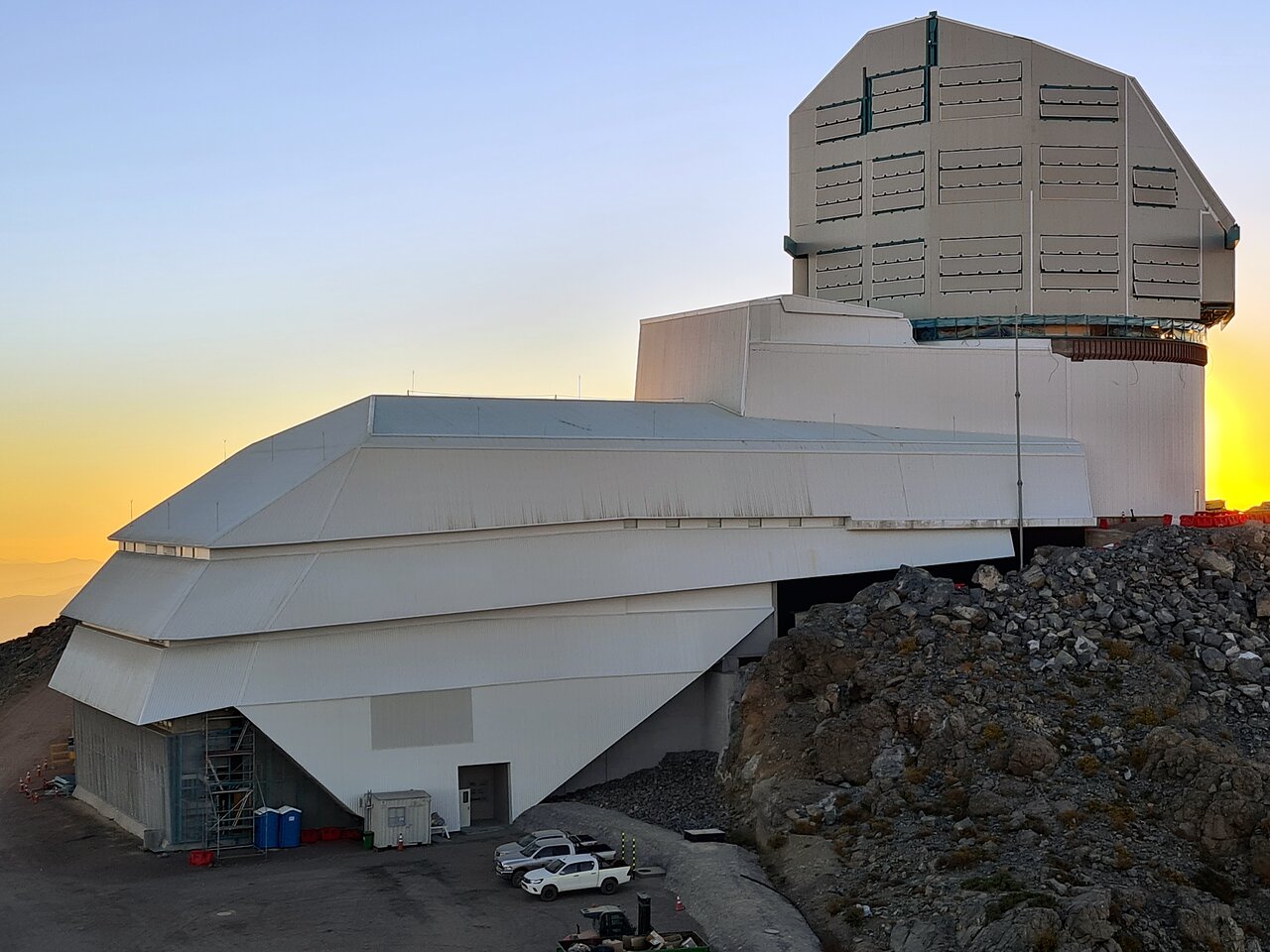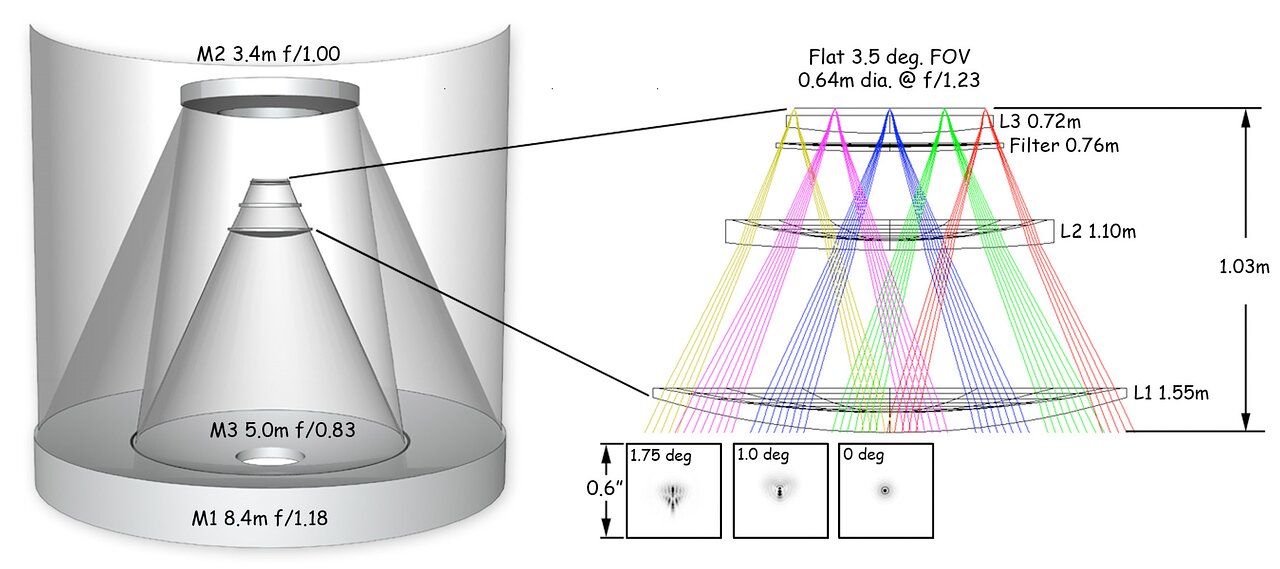
Vera C. Rubin Observatory: New window on the Universe
NOIRLab’s newest Program is set to transform astronomy by performing the largest survey of the Universe, both near and far, ever undertaken
Profile
Name:
-
Vera C. Rubin Observatory
Location:
-
Cerro Pachón, Chile
First light:
-
By the middle of this decade
Telescope properties:
-
Three-mirror anastigmat reflector with 8.4m primary, f/1.23
Operational waveband:
-
320-1060nm
Altitude:
-
2662m (8737ft)
Science goals:
- To provide a statistical study of dark matter and dark energy
- To perform a census of asteroids in the Solar System
- To measure the structure of the Milky Way galaxy
- To discover new transients
4 March 2022
The Simonyi Survey Telescope isn’t the only telescope at Vera C. Rubin Observatory. There’s also the Rubin Auxiliary Telescope, formerly known as the Calypso Telescope, which was donated to the project in 2008 by philanthropist Edgar Smith. Its goal is to measure how starlight is filtering through the atmosphere above Rubin Observatory, to help correct for how seeing conditions affect the transmission.
Vera C. Rubin Observatory, which is set to begin science operations by the middle of this decade, is armed with an 8.4-meter wide-field mirror to survey the entire sky visible from its base on Cerro Pachón in Chile once every three nights. Its 10-year mission is called the Legacy Survey of Space and Time (LSST), but what is it that really sets it apart from other large telescopes, such as its mountaintop neighbor NOIRLab’s International Gemini Observatory?
Ordinarily, a telescope might image an interesting galaxy, or track a new comet, or quickly slew to spy the latest supernova. But how can we tell if that one thing is typical or not? How are astronomers able to draw trends from such a limited sample?
This is where Rubin Observatory comes in. It won’t just observe a few galaxies to study dark matter and dark energy — it will map billions of them across the Universe, measuring how they warp space and time, and how quickly they are all receding during different eras of cosmic history as the Universe expands.
Within those galaxies (and our own Milky Way), it will hunt for what astronomers call transients — exploding stars, black hole outbursts, flare stars and other things that go bump in the night — finding many of them that would otherwise go unnoticed.
Closer to home, Rubin Observatory will search for millions of comets and asteroids within our own Solar System, particularly potentially hazardous asteroids that could one day impact Earth.
By detecting and mapping so many targets, Rubin Observatory will allow astronomers to employ statistics to better understand the Universe. For example, measuring the redshifts of millions of galaxies will allow astronomers to probe the secrets of dark matter and dark energy.
It won’t just observe a few galaxies to study dark matter and dark energy — it will map billions of them across the Universe.
By detecting and mapping so many targets, Rubin Observatory will allow astronomers to employ statistics to better understand the Universe. For example, measuring the redshifts of millions of galaxies will allow astronomers to probe the secrets of dark matter and dark energy.
By finding hidden asteroids in our Solar System, and employing orbital and photometric data, it will help fine-tune our models of how the Solar System formed and then evolved during its early days, when asteroids were flung to the locations in which they orbit now.
It’s fitting that the observatory is named after Vera Rubin, who was the astronomer who provided compelling evidence for the existence of dark matter, alongside her colleague, Kent Ford (Fritz Zwicky was the first to postulate the existence of dark matter in the 1930s). Ford, an instrument maker, would undoubtedly have been impressed with Rubin Observatory’s design specifications. The 8.4-meter telescope is named the Simonyi Survey Telescope, which is funded in part by the philanthropist Charles Simonyi. To obtain its huge 3.5-degree field of view (encompassing 9.62 square degrees) it incorporates an innovative compound telescope design featuring a three-mirror configuration coupled with a corrector lens. It’s classed as an anastigmat, meaning that its three curved mirrors (the primary 8.4-meter mirror, a 3.5-meter secondary mirror and a third 5-meter mirror embedded in the primary) minimize optical aberrations such as coma and spherical aberration, which distorts images.
To give you an idea of how much of the sky it can see at any one time, the angular diameter of the full Moon in the sky is about half a degree. Rubin can see a patch of sky equivalent in area to 40 full Moons, and the same width as seven full Moons lined up side by side.
In the course of the initial ten-year survey, the telescope will image each 9.62-square-degree patch of sky every few nights (and at least 800 times), returning to it every 3-4 days over the life of the survey, and its 3.2-gigapixel camera, which is made up of 189 individual CCD sensors, will collect a total of 500 petabytes of data. The camera itself is huge, the size of a small car and weighing 3200 kilograms.
In the course of the initial ten-year survey, the telescope will image each 9.62-square-degree patch of sky every few nights (and at least 800 times),, and its 3.2-gigapixel camera, which is made up of 189 individual CCD sensors, will collect a total of 500 petabytes of data.
Scientific observations by Rubin Observatory are not set to begin for another few years, but this powerful facility promises to revolutionize astronomy across all of its main scientific areas of focus, from comets and asteroids to distant galaxies and the expansion of the Universe.
Links





